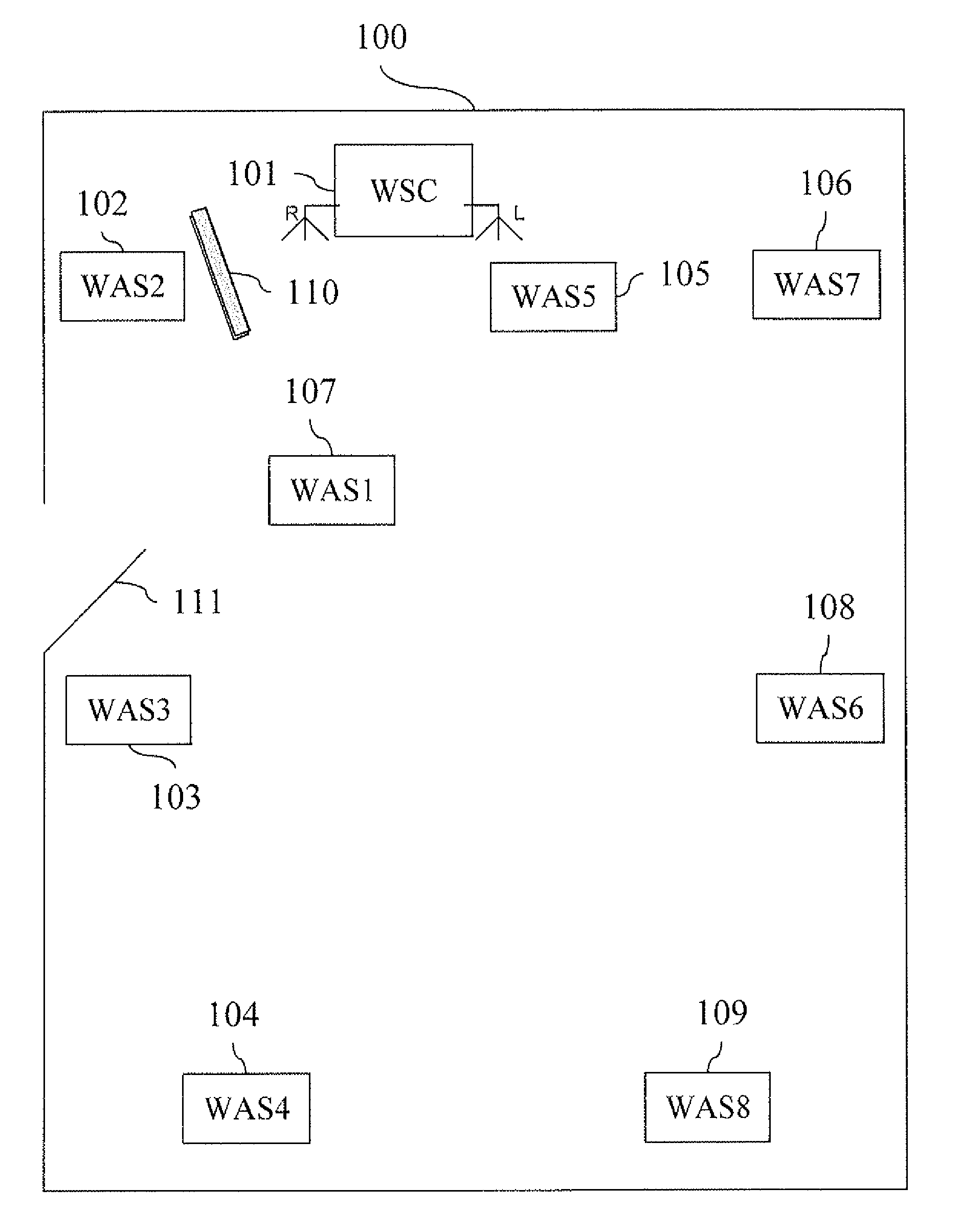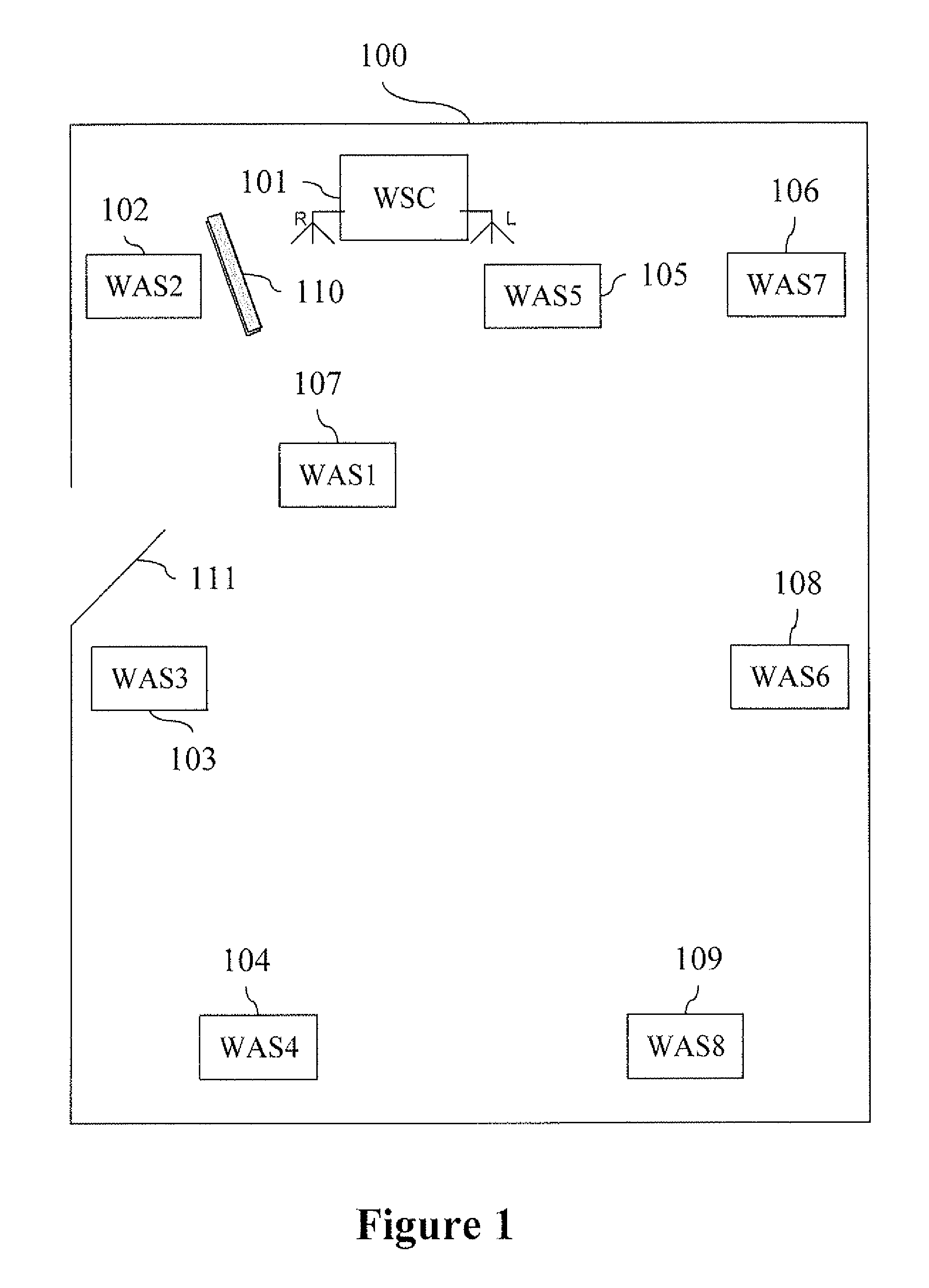Method for determining a sequence of access to a communications network, corresponding computer program product, storage means and devices
a technology of a communications network and a sequence of access, applied in the direction of data switching networks, instruments, broadcasting with distribution, etc., can solve the problem of large latency (or transmission time) and achieve the effect of limiting the risk of content non-reception and minimizing the transmission time of data content in the network
- Summary
- Abstract
- Description
- Claims
- Application Information
AI Technical Summary
Benefits of technology
Problems solved by technology
Method used
Image
Examples
Embodiment Construction
[0063]In one particular application of the method for determining a sequence of access according to one particular embodiment of the invention, the following description is situated in the context of a communications network 100 which is a 7.1 type home cinema or home theatre network as illustrated by FIG. 1.
[0064]Naturally, the invention can also be applied in a 5.1 type home cinema network or even in any other communications network.
[0065]In the context of the 7.1 type home cinema network 100, the speakers are connected to an audio source by means of a wireless mesh network.
[0066]For example, the 7.1 home cinema network 100 comprises an audio-video source terminal (for example a DVD reader), a television screen (not illustrated), a first speaker 107, called a subwoofer, a second speaker 102, called a front-left speaker, a third speaker 103, called a side-left speaker, a fourth speaker 104, called a left ambience speaker, a fifth speaker 105, called a center speaker, a sixth speake...
PUM
 Login to View More
Login to View More Abstract
Description
Claims
Application Information
 Login to View More
Login to View More - R&D
- Intellectual Property
- Life Sciences
- Materials
- Tech Scout
- Unparalleled Data Quality
- Higher Quality Content
- 60% Fewer Hallucinations
Browse by: Latest US Patents, China's latest patents, Technical Efficacy Thesaurus, Application Domain, Technology Topic, Popular Technical Reports.
© 2025 PatSnap. All rights reserved.Legal|Privacy policy|Modern Slavery Act Transparency Statement|Sitemap|About US| Contact US: help@patsnap.com



